This past summer I did a post about my fascination with the vast, lonely high plains of Nevada. For the past few days I have been doing some exploring for possible future trips for Natural Habitat in Qinghai Province, an unknown region of western China. I am truly in awe with this harsh, beautiful frontier, and the presence of some of the the world’s most endangered wildlife. This is a region of nomadic yak herdsmen who have Buddhist beliefs that prevent the killing of animals, other than their own livestock for sustenance. Although grazing animals do compete with wildlife, there are some enormous nature reserves which are home to healthy populations of animals that few people have ever heard of. I honestly never believed I would ever see some of the some these creatures in the wild.
Wildlife-
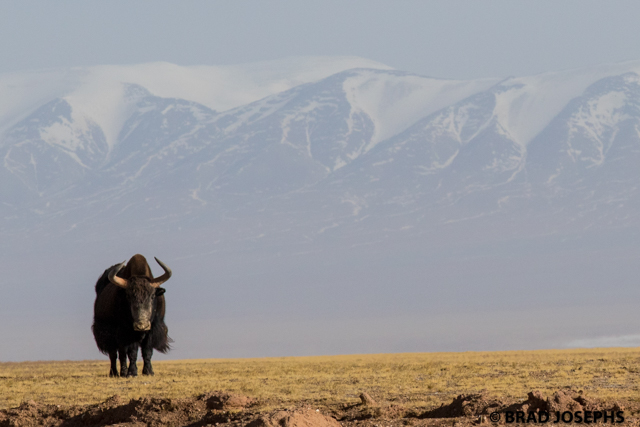
The highlight of our journey so far was sighting wild yaks, which has been a lifelong dream of mine. Much larger than domestic yaks, large males can stand over 7 feet at the shoulder and weigh over 2,200 lbs! Listed as vulnerable by the IUCN, there are only around 10,000 individuals left in the wild, in the remotest regions of the Tibetan Plateau at elevations of 10,000-18,000 feet. Protection from poaching in China, and the establishment of strictly protected wildlife reserves has allowed the populations to stabilize in recent years.
I have never been to anywhere in Asia that was as sparsely populated as Qinghai Province. Many times I felt like we were on some obscure highway in Northern Alaska or Canada. The weather is severe, often reaching -40 in the winter, winds are constant, and the elevation ranges between 14,000 and 16,000 feet, with much higher mountain peaks. It was quite difficult acclimating to the lack of oxygen, as time constraints didn’t allow us to step up gradually. We flew straight from the low Sichuan Basin, so it was quite a shock to our systems. I admire the animals that thrive in these conditions, all of which have special adaptions to the elevation and cold, such as thick coats, enlarged lungs, and high hemoglobin concentrations in their blood.
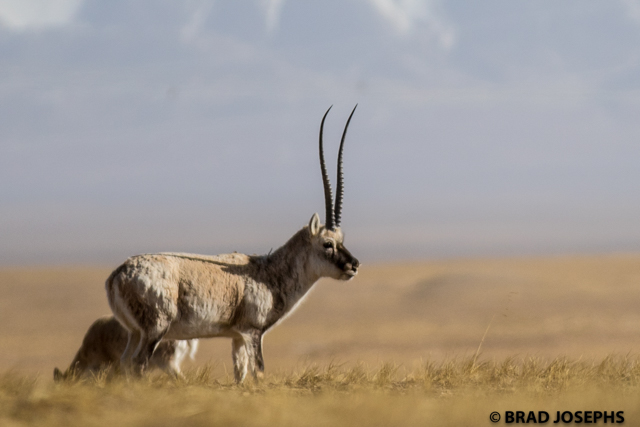
The spectacular Tibetan Antelope has been spared from extinction from poaching for its soft wool, called shahtoosh, from strict protection. At one time a million of these ungulates covered the Tibetan Plateau, but now only 75,000 remain.
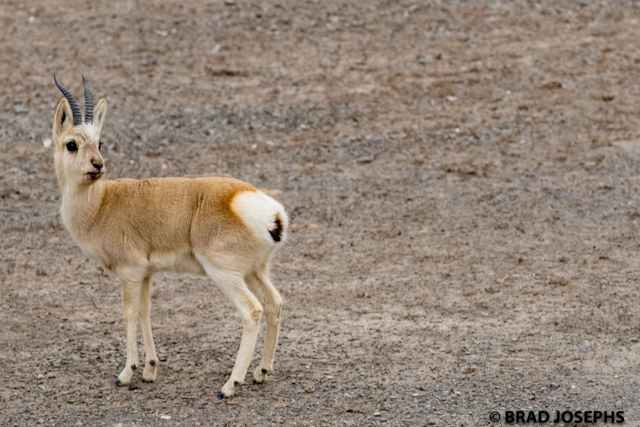
These tiny (2 feet at the shoulder), adorable, but very tough tibetan gazelles, also called Goa, are listed as near threatened by the IUCN. Their major threat stems from browsing competition with domestic goats and sheep.
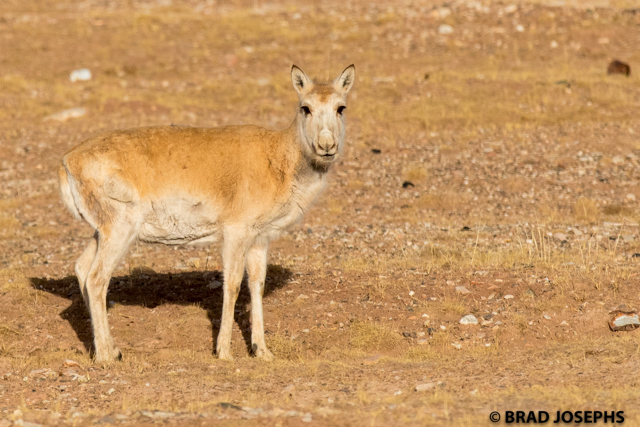
I love the “Dr Suess” look of the Tibetan Gazelle (Goa).
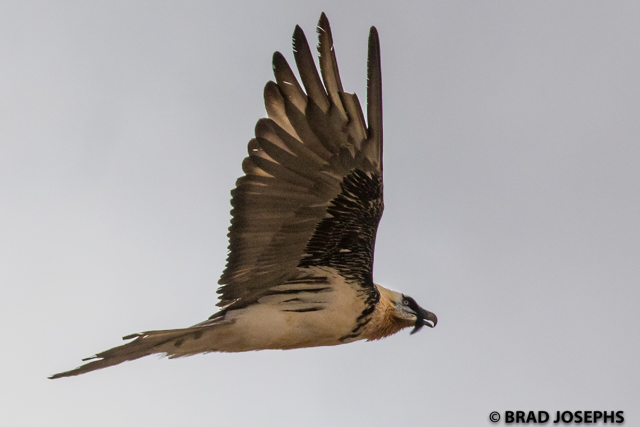
The Lammergeir, or bearded vulture, or ossifrage, has always been very high on my list of desired birds to observe in the wild. These amazing scavengers have evolved a specialized ability to survive on a diet of 90% bone. Their powerful beaks can crack the leg bones of ungulates, but they also fly high in the air and drop them onto rocks to break them. Bone swallowed whole is easily digested by an extremely acidic stomach. This bird flew close enough for us to see the strand of bristles for which they get their name.
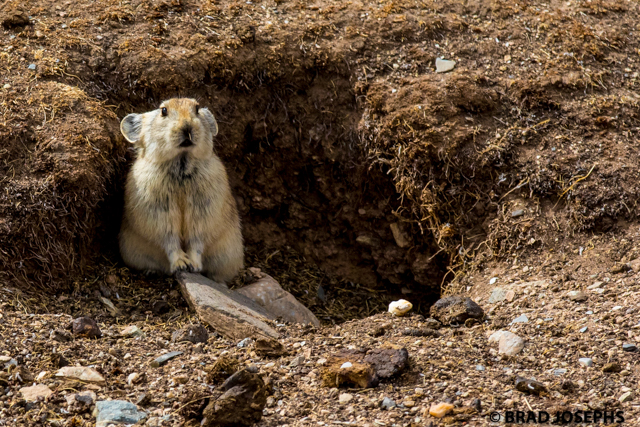
There are over dozen species of pika in China. In certain areas we searched, the tundra was covered with pika holes, and hundreds of these super cute critters stared at us in curiosity at their burrow entrances.
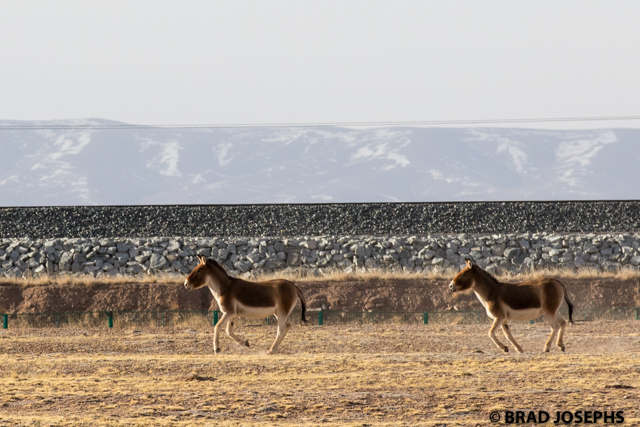
We spotted numerous Tibetan Wild asses, or Kiang, roaming the windswept landscape. I found them to be beautifully colored symbols of the rugged Qinghai frontier.
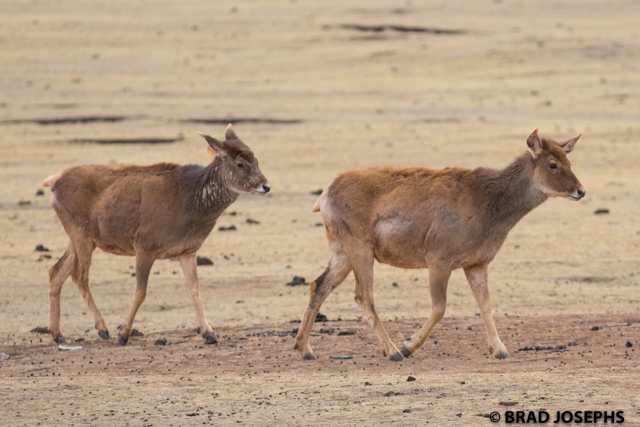
The White Lipped Deer (Thorold’s deer) is another very rare species that can be only be found in the remotest corners of the Tibetan Plateau. To me, they seemed similar to elk. They can survive at altitudes up to 17,000 feet, the highest elevation of any member of the deer family.
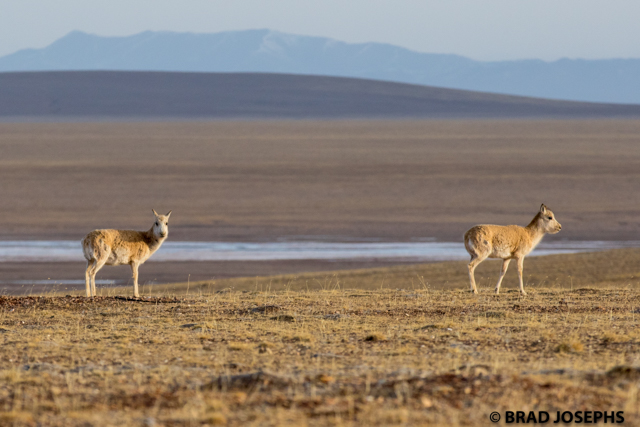
Tibetan antelope against a vast, wild horizon at sunrise.
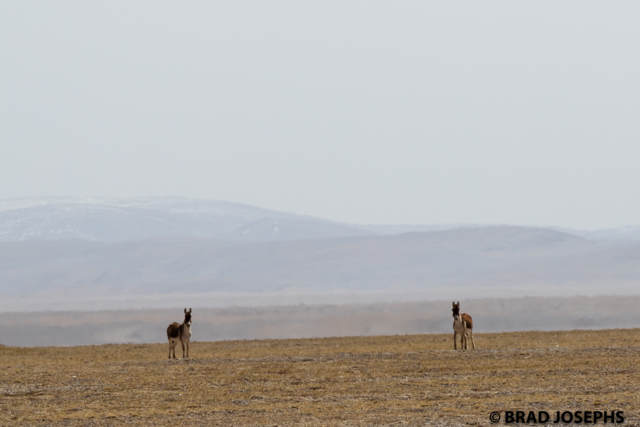
Sharp eyed Kiang keep watch on me in the distance.
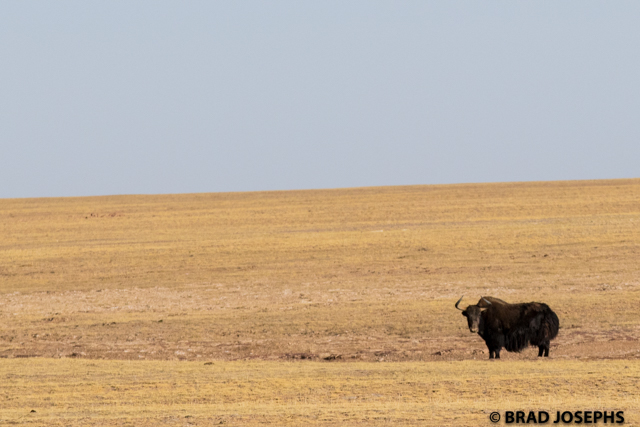
wild yak
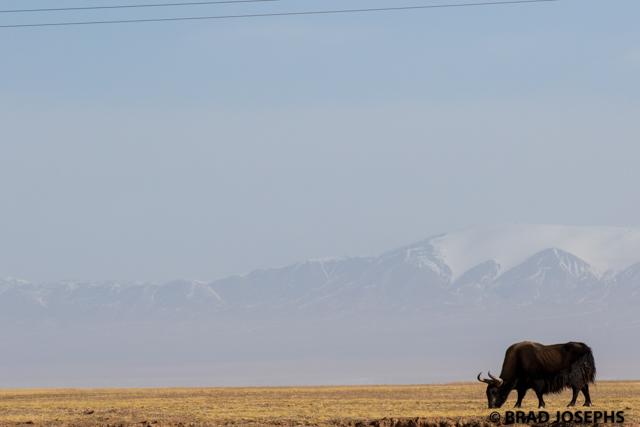
wild yak
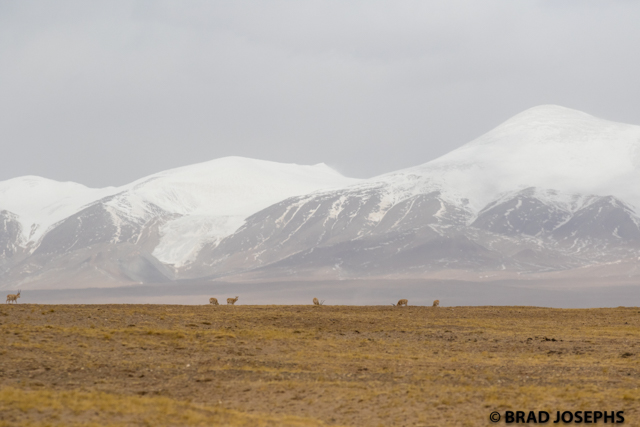
Tibetan antelope graze against rugged, glaciated peaks
Geography

Qinghai, China’s largest province, sits just north of Tibet Autonomous Region and south of Xinjiang Autonomous Region and Gansu Province.
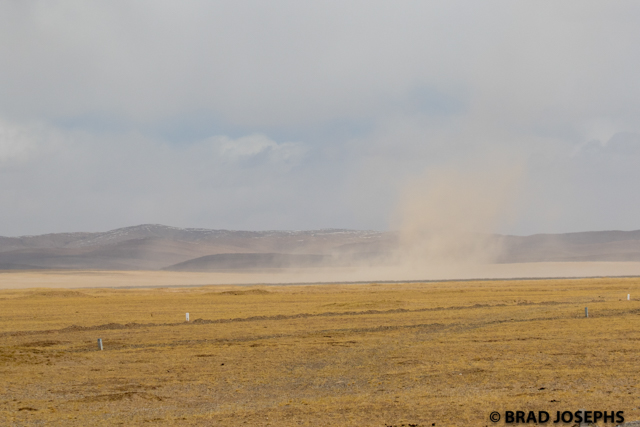
The Tibetan Plateau’s beauty is in its stunning austerity. Gale force winds often clash with updrafts forming dustdevils.
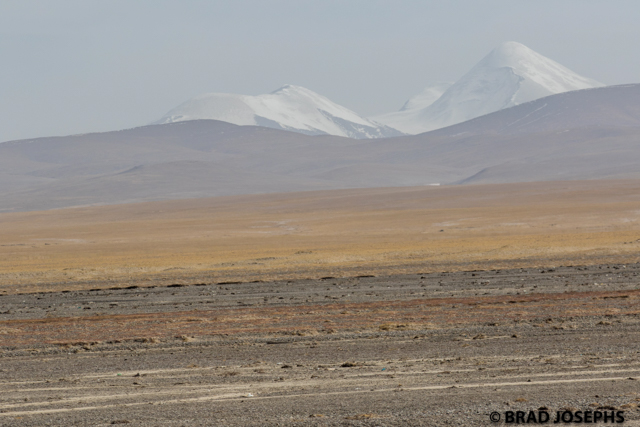
This country reminded me very much of Denali, the North Slope of the Brooks Range, or the Tombstone Mountains of the Yukon, except without the oxygen.
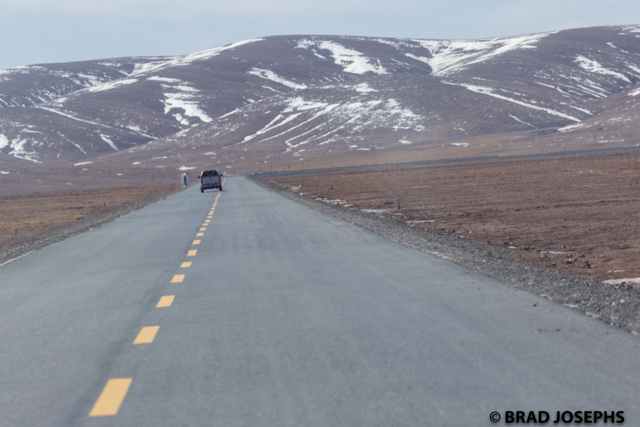
One of the few lonely roads that traverse the high altitude tundra. Hot summers and extremely cold winters, and high daily temperature variation result in many frost heaves and cracks on the paved roads.
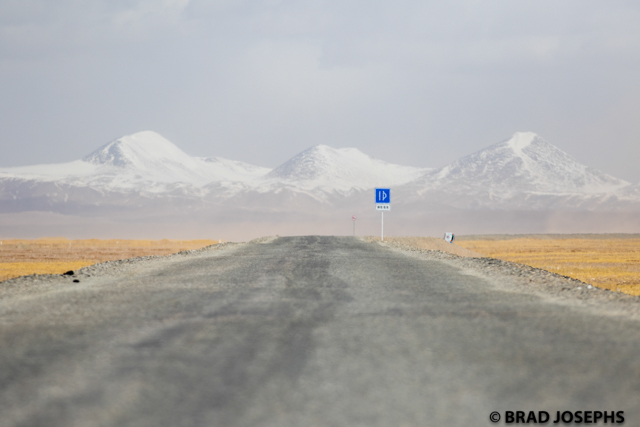
Lonely highway
People
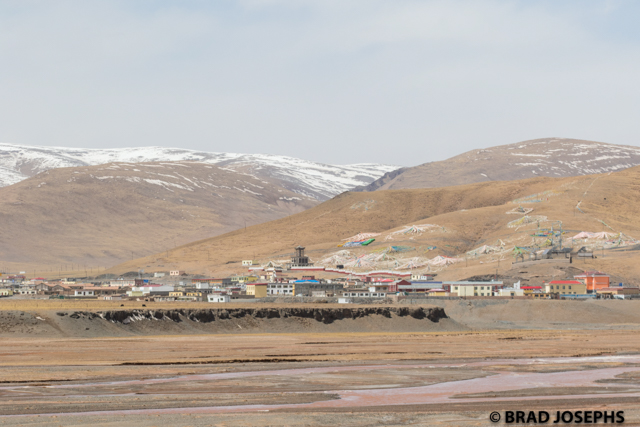
Small townships are few and far between, and serve as local hubs for the nomadic yak herders, which make up the entirety of the economy.
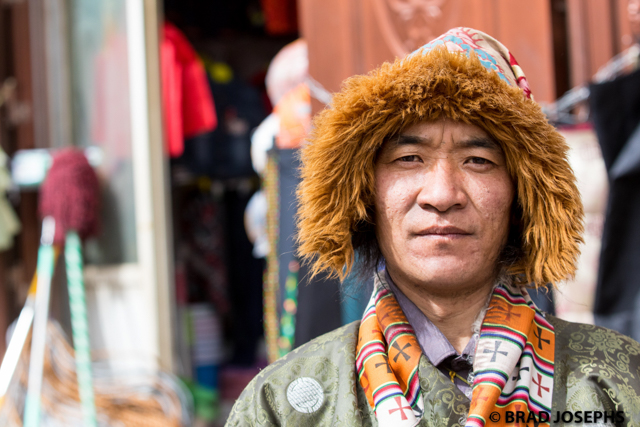
Khanba Tibetan man.
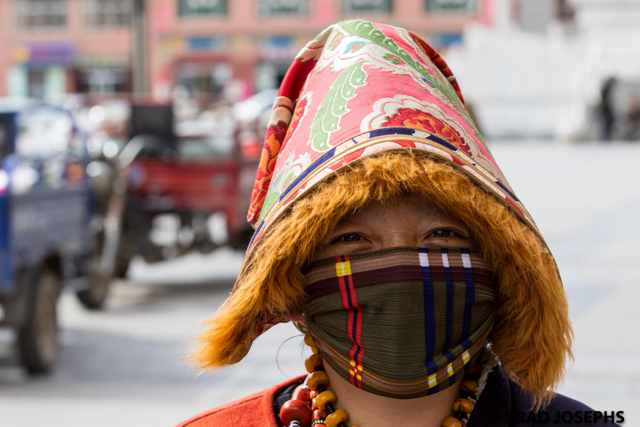
Khamba Tibetan Woman

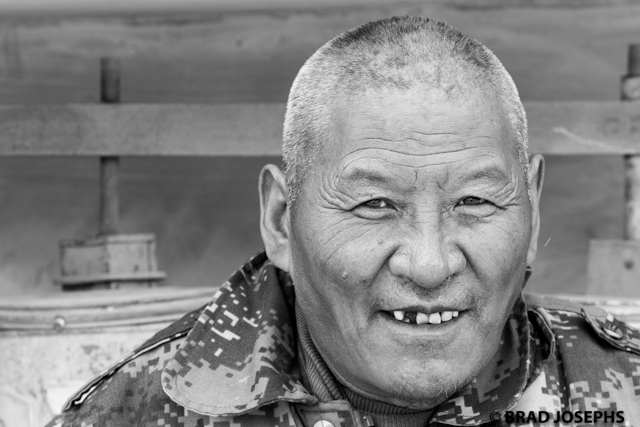
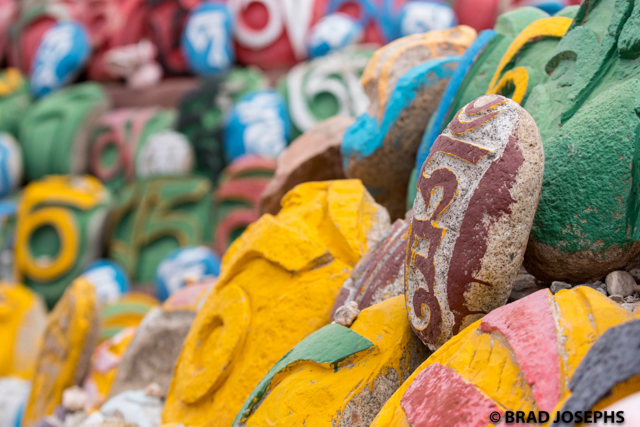
Mani Stones at Buddhist Monastery
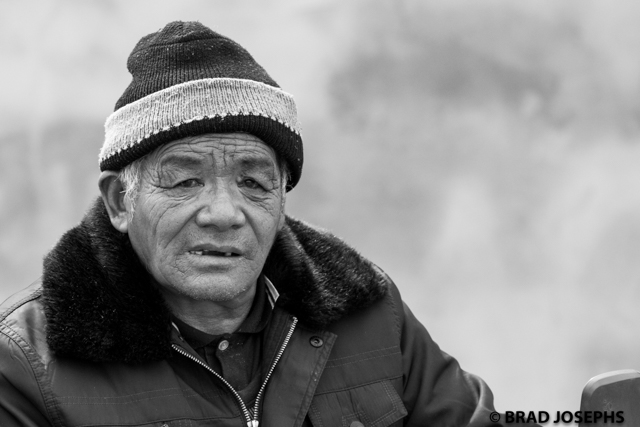
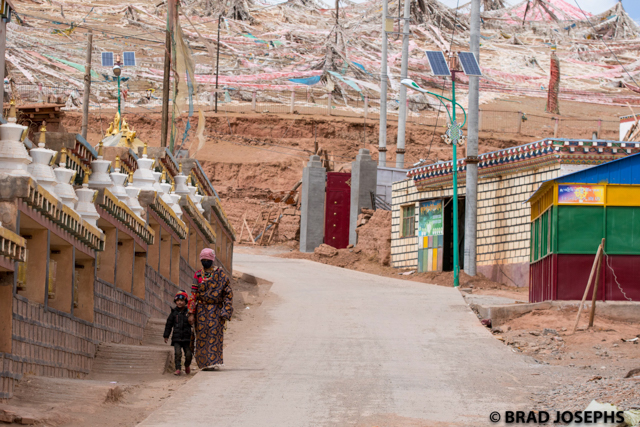
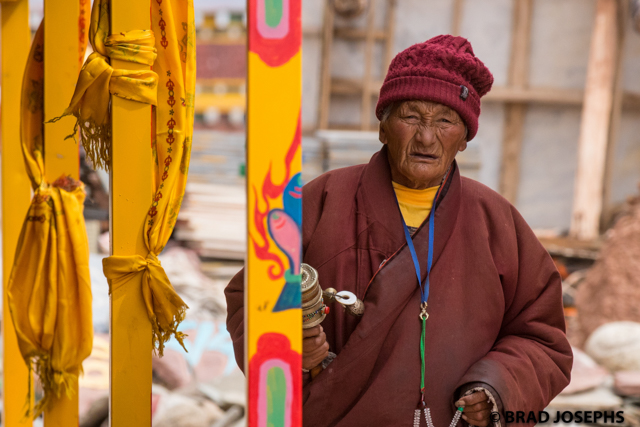
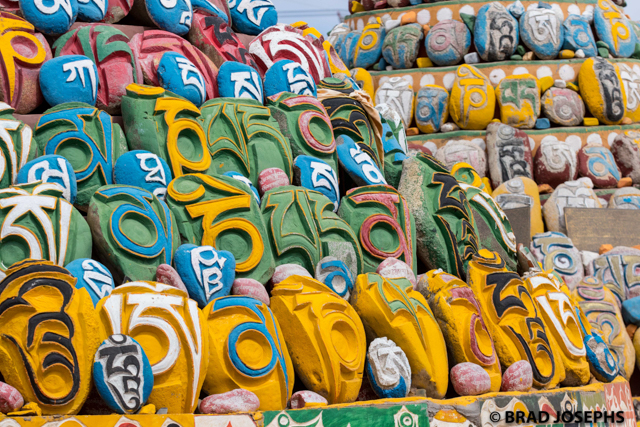
Brilliantly colored mani stones brightened the wintery landscape near a Buddhist Temple.
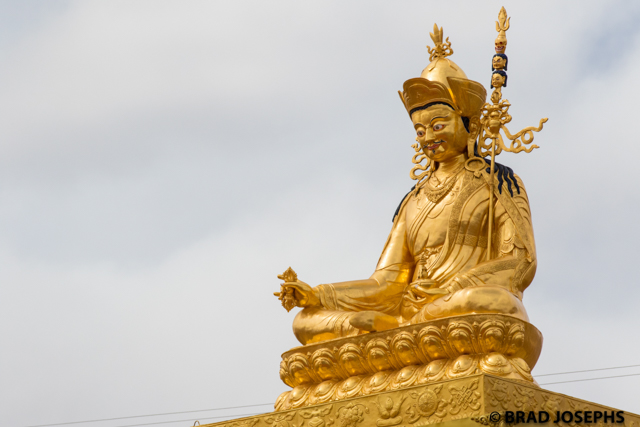
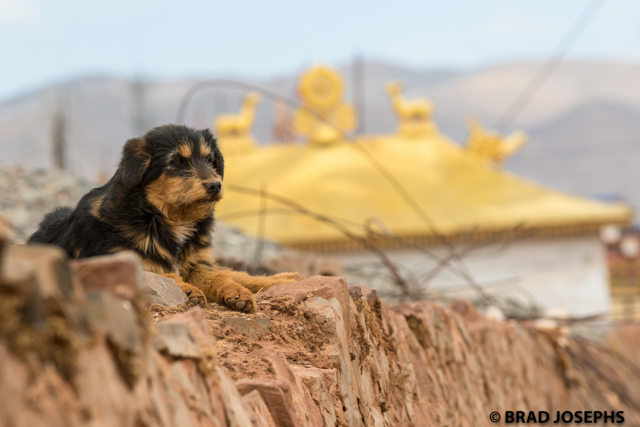
Peaceful, friendly dogs are a sure sign of peaceful, friendly residents.
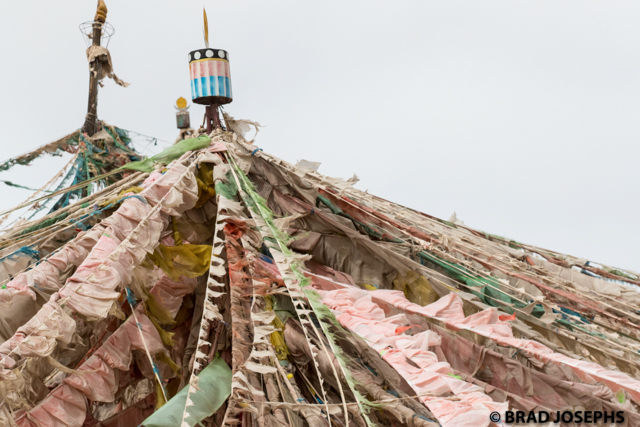
Streams of prayer flags, battered and bleached from gales and harsh high altitude sun passively emit scriptures in the constant wind.
Exploring a region like Qinghai Province is a humbling experience. This is one of the few unknown regions of the planet guarded by weather, remoteness and elevation that resists human influence. Wildlife that most people have never heard of exist in some of the remoter corners, protected by Government law, isolation, and the beliefs of the Buddhist culture. I just caught a short glimpse of this magic frontier, and I cant wait to return to dig deeper. I stood against the buffeting wind, gasping for oxygen in the thin air and looked into the distance, up the rugged valleys to the snow covered peaks and dreamed of the large predators that can still be found here. Tibetan brown bears, tibetan wolves and snow leopards still reside in this wilderness, and that gave me comfort.

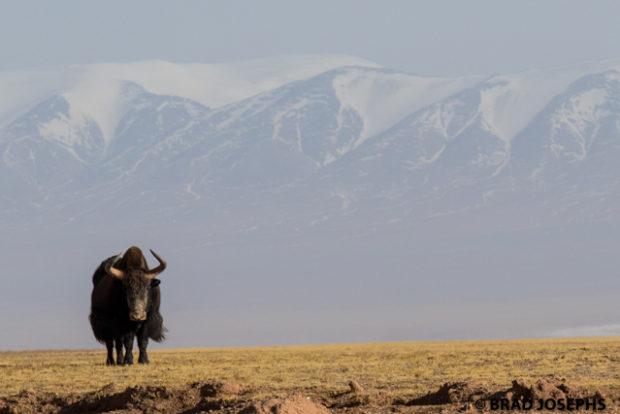

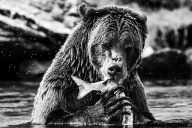
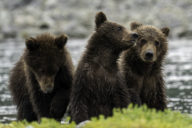
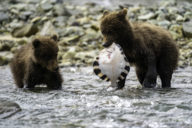
7 Comments
Places like this have no better ambassador than you. Thank you for sharing your knowledge and your passion!
Eloquent commentary of “faraway places with strange sounding names.” Thanks, Brad.
Extremely cool brad very proud
Stunning photos Brad. I would never get a glimpse otherwise. Thank you.
Fabulous post and awesome pics ! Thanks for sharing ! Definitely would make anyone want to go and experience that…… well maybe not everyone, but it does for me, that’s for sure !! Very cool !!
The statue is of Guru Rinpoche – the bringer of Mahayana buddhism to Tibet, where it became Vajrayana, a Tantric branch called the Diamond Vehicle. Om Benza Guru Padma Siddhi Hung!
Lenka & I toured Mongolia. A lot similar. And we enjoyed that but NO paved roads there.